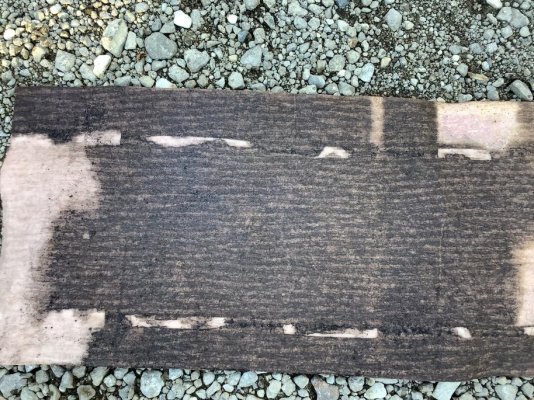Much of what the Diesel Dipper director says is accurate, however, I'd question aspects of the data he shares. Some of it sounds a bit scare mongerish.
The "Diesel Dipper's" clear plastic bowl lacks ABYC compliance if it is installed in an engine room, it has no heat shield for flame resistance.
In my experience, no additive can clean a fouled fuel tank, so please don't fall for advertising hype regarding tank cleaning in a can, it's simply not possible (he didn't say it could, but others often do).
50% is not a universal fuel return number, it varies from engine to engine. Also, the notion that primary and secondary filters are actually polishers is simply not true. Many recreational marine engines sit idle for weeks or months, during which time they aren't "polishing". Also, the volume at which an engine pumps and filters fuel is a fraction of what a true polishing system will, polishing system pumps can be 100 GPH or more, for as long as you run them, and they can be run dockside, or while underway. A polishing system's high volume pump will create a current across the bottom of a tank, which will entrain contaminants, and trap them in the filter, provided it is plumbed with pick up and returns to the bottom of each end of the tank. Alternatively, picking up from a well in the tank bottom is also effective, but return fuel should not splash from the top of the tank, returns should have drop tubes. Splashing fuel aerates it, which hastens its degradation.
A polishing system, any polishing system, that includes a bottom of tank pick up, will remove water.
Crude oil has come from all over the world, not just Brent, for ever. He is right, sweet crude contains less sulfur.
The biodiesel that is added to diesel is not "MacDonalds" deep fryer oil, and rarely animal fat based, it is almost all FAME, or plant-based. Biodiesel has a higher lubricity than distillate-diesel (mineral based diesel fuel) and higher cetane, it's often added in small amounts, 1-2%, to diesel after removal of sulfur, to replace the lost lubricity. In that small amount, it has no meaningful effect on diesel's longevity. In higher percentages, 5% and above, it can and does affect diesel's tank life. More on bio-diesel here
https://stevedmarineconsulting.com/wp-content/uploads/2014/03/BiodieselProBoat116.pdf
Asphaltene is not a 'modern diesel problem', it's been an issue for decades, certainly as long as I've been in the business, 35 years.
You only can have "diesel bugs", bacteria, if water is present. Without water, no bugs and no need for a biocide.
Condensation inside tanks is mostly myth, I've looked inside scores of diesel tanks all over the world, in all weather conditions, and have never seen visible condensation other than in a tank whose inspection ports were removed, allowing warm humid air to enter a cold tank.
If you fill a tank to the top, it's likely to overflow on the first warm day, BTW. So, 9/10 is better if you are going to "fill" it for storage.
"Rubish diesel"? The primary and secondary filter should prevent this from making its way to the engine. They may get clogged, but they should not allow dirty fuel to pass.
The dip tube is a great idea, makes great sense, it's been called a stripper tube for a very long time, detailed here
https://stevedmarineconsulting.com/cleaning-diesel-tanks/ This tube is really what's different, any filter/pump picking up from the bottom of the tank will remove water, without this device.
How does one drill holes for the tapping screws flange without filings going into the tank? I would not rely on tapping screws for a tank fitting in any event, they should be threaded machine screws.
Diesel fuel sold in the US, for on road, off road and marine applications, must meet ASTM D-975-21 (and EN-590 in the EU). You often hear additive manufacturers warn users about low quality or otherwise flawed diesel that needs an additive in order to run safely in your engine. While off spec diesel does exist, most of it is on spec and compliant with D975. Tens of thousands of over the road trucks run tens of millions of miles with straight ASTM spec diesel. To say it has changed dramatically in recent years simply isn't true. Yes, sulfur content has been substantially lowered over the past 20 years and that has had some side effects, however, it is being implied in this video that it lasts no longer than gasoline (6 months, that may be what fuel refiners say, but they have a vested interest in you using fuel, or disposing of it because it is "old"), and that's simply not true, diesel is far more stable.
More on additives
https://stevedmarineconsulting.com/diesel-fuel-additives-part-i/
I primarily use two additives, Stanadyne Performance Formula to improve cetane and lubricity, and Gold Eagle StaBil when storing diesel and gasoline.


